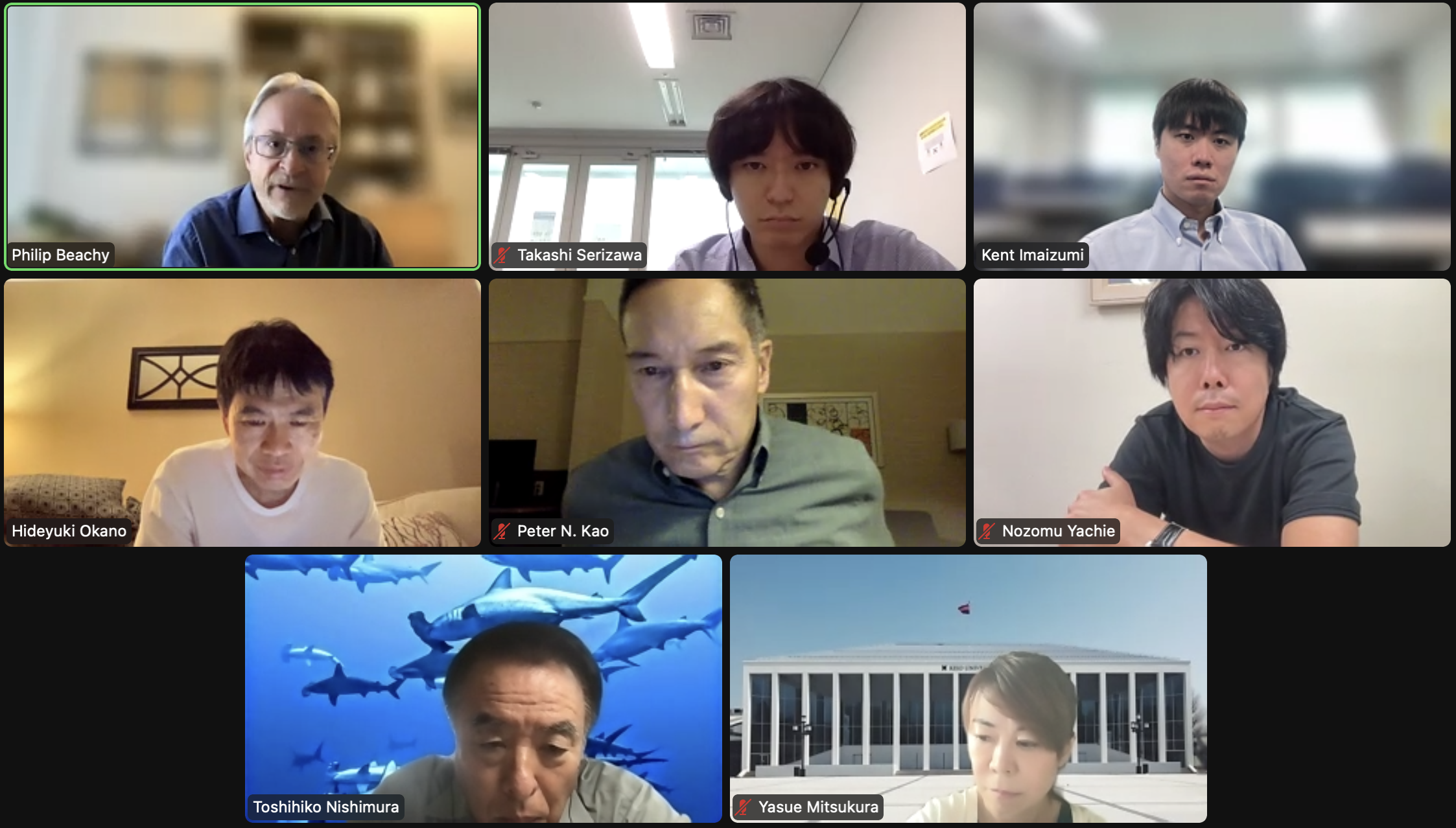[Event Report] 9th Keio-Stanford Webinar (held on July 23, 2022)
2022.08.29The 9th Keio-Stanford Webinar was held on Saturday, July 23, 2022. The theme of this session was Pattern Formation and Stem Cell Development, with the Department of Anesthesiology, Perioperative and Pain Medicine (SLDDDRS) at Stanford School of Medicine; and the Department of Physiology at the School of Medicine and Yagami Data Security Lab at Keio University, acting as hosts, while KGRI; the Life Science Innovation Network Japan (LINK-J); and the Japan Science and Technology Agency (JST) served as co-hosts. Approximately 100 people participated in the session, which took the form of an online seminar or "webinar."
To begin Professor Ronald G. Pearl (Stanford University; Chairman, SLDDDRS Stanford) and Professor Hideyuki Okano (Keio University School of Medicine; Head of International Advisory Board of SLDDDRS) delivered the opening remarks, explaining the significance of the Keio-Stanford Webinar and sharing the latest findings in the field in accordance with the webinar theme of Pattern Formation and Stem Cell Development.
The event then continued with lectures from four speakers.
In Keynote Lecture 1, Professor Philip Beachy of Stanford University presented on Hedgehog signaling, including the secretion mechanism and Hedgehog-driven epithelial regeneration. Dr. Beachy introduced the involvement of the sodium channel activity of Dispatched for the secretion of Hedgehog. He also introduced the role of Hedgehog signaling in epithelial-mesenchymal feedback during epithelial regeneration.
In Keynote Lecture 2, Professor Nozomu Yachie of the University of British Columbia presented on a technique for tracing the cell lineage in embryogenesis at the single-cell resolution. Dr. Yachie developed a unique method to enable the description of the entire cell lineages by using genome editing technology and single-cell transcriptomics.
In Short Talk 1, Project Instructor Kent Imaizumi of the Department of Physiology at Keio University School of Medicine gave a presentation on the self-organization of brain organoids driven by differences in adhesion between cells.
In Short Talk 2, Visiting Researcher Takashi Serizawa presented on the development of a new combinatorial fluorescent reporter system for tracing all three germ layers. Dr. Serizawa applied this technology to various biological events, including tooth regeneration and in vitro fluctuations of the specification of three germ layers.
A Q&A session was also held with lively exchanges of questions and answers from the panelists and audience. Professor Hideyuki Okano and Professor Peter Kao (Stanford University; SLDDDRS Stanford) delivered the closing remarks and summarized the webinar.

[Event information]
9th Keio-Stanford Webinar (July 22, 2022)
[Event report]
1st Keio-Stanford Webinar "Neurodegenerative diseases" (held on January 30, 2021)
2nd Keio-Stanford Webinar "Organoids" (held on March 20, 2021)
3rd Keio-Stanford Webinar "Regenerative medicine" (held on May 29, 2021)
4th Keio-Stanford Webinar "Sleep" (held on July 17, 2021)
5th Keio-Stanford Webinar "Transdifferentiation by Manipulating Transcriptional Factors" (held on October 16, 2021)
6th Keio-Stanford Webinar "Frontiers of molecular cell biology and its implementation in society" (held on November 6, 2021)
7th Keio-Stanford Webinar "Advanced BioScience Webinar for Drug, Device Development" (held on January 22, 2022)
8th Keio-Stanford Webinar "Current Topics in Neuroscience" (held on March 26, 2022)





